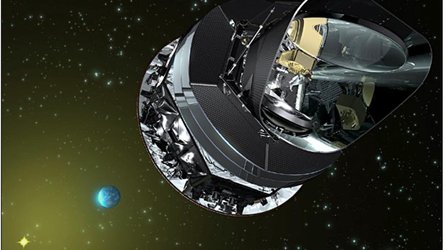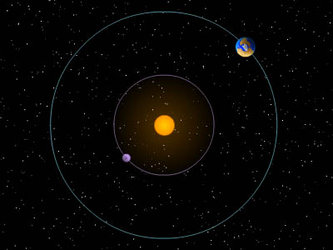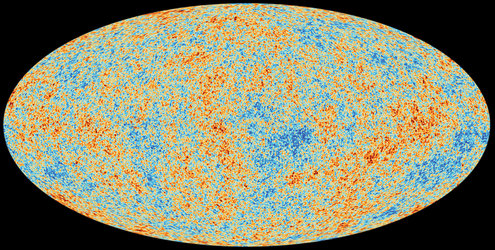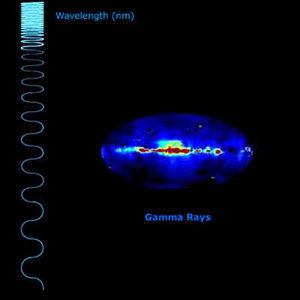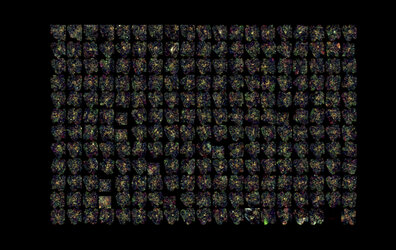Journey
Planck was launched on 14 May 2009 on an Ariane 5 along with ESA’s Herschel infrared observatory. The mission was designed to study the Cosmic Microwave Background (CMB), the relic radiation from the Big Bang, with an accuracy defined by fundamental astrophysical limits.
At launch, the Herschel-Planck combination measured approximately 11 m high and 4.5 m wide, with a weight of about 5.7 tonnes. They separated soon after launch and headed into different orbits. The two spacecraft operated independently.
If Planck has been placed in orbit around Earth, heat from our planet, the Moon and the Sun would have interfered with its instruments, reducing their sensitivity. Instead, the telescope orbited the second Lagrange point of the Earth-Sun system (L2), a point in space located 1.5 million km from Earth. L2 has the important property that a spacecraft there can stay fixed in the Earth-Sun system and is situated on Earth’s night-side.
It was an excellent location for Planck: the satellite avoided unwanted emission from the Earth, Moon and Sun, which would otherwise confuse the signal from the CMB. Because Earth and the Sun are in the same general direction, it also offered good sky visibility for astronomical observations. In addition, this orbit kept Planck outside Earth’s radiation belts, which could have disturbed observations.
For more information, see L2, the second Lagrangian point.
It took Planck about 60 days to enter its final operational orbit around L2. The observatory settled into an orbit that resembles a halo around L2, with an average amplitude of















 Germany
Germany
 Austria
Austria
 Belgium
Belgium
 Denmark
Denmark
 Spain
Spain
 Estonia
Estonia
 Finland
Finland
 France
France
 Greece
Greece
 Hungary
Hungary
 Ireland
Ireland
 Italy
Italy
 Luxembourg
Luxembourg
 Norway
Norway
 The Netherlands
The Netherlands
 Poland
Poland
 Portugal
Portugal
 Czechia
Czechia
 Romania
Romania
 United Kingdom
United Kingdom
 Slovenia
Slovenia
 Sweden
Sweden
 Switzerland
Switzerland



























